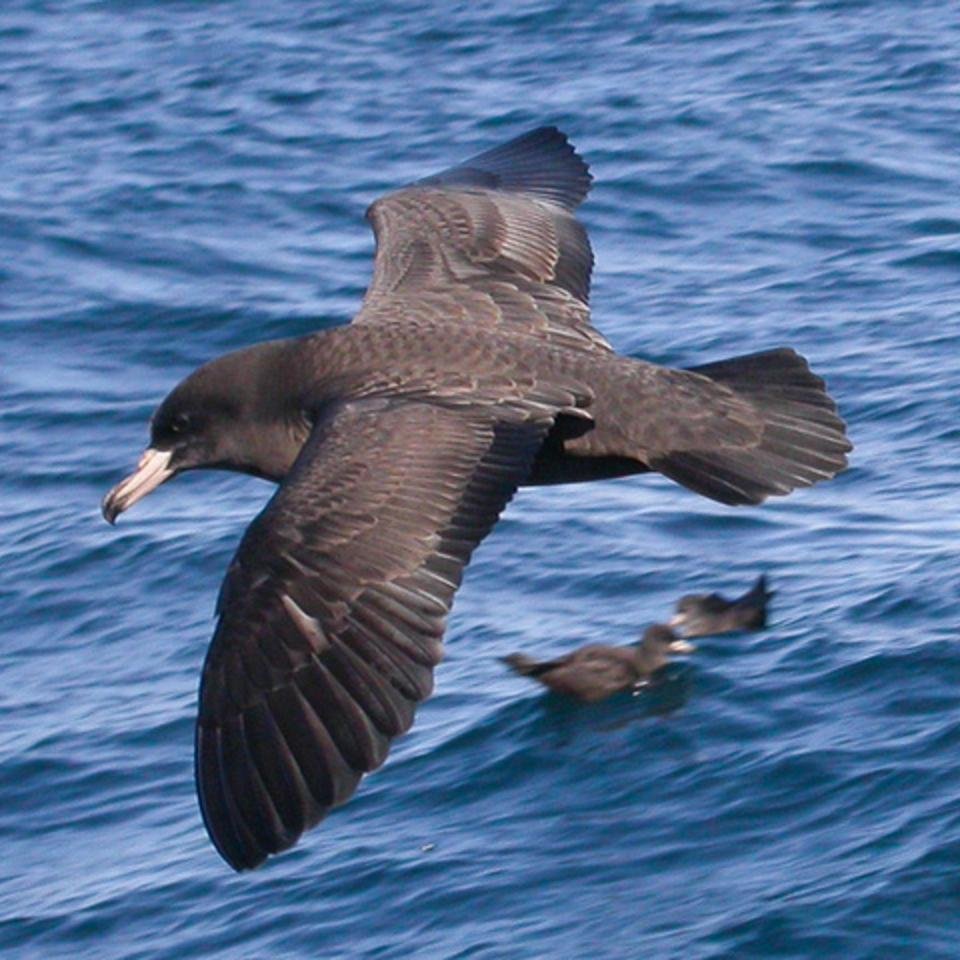Dragonfly has published a report estimating where the range of black petrel overlaps with commercial trawl and longline fisheries in northern New Zealand. The greatest overlap with fisheries is on the shelf edge to the north of Great Barrier (Aotea) Island.
The data used for estimating overlap was from a combination of sources: seabird counts from behind fishing vessels collected by government observers, counts made by Chris Gaskin during birdwatching trips (see Pterodroma Pelagics) and from high-resolution GPS tracking of 15 birds during the breeding season (carried out by Biz Bell, Wildlife Management International, and Todd Landers, Auckland Council).
“None of these data sources was enough on its own”, says Edward. “The observer data contained mistaken identifications, the data from the birdwatching tours was focused inside Hauraki Gulf, and the number of GPS tracks was limited.
However, when we put them together, we were able to produce these models that confirm other published tracking data.”
Black petrel is the New Zealand endemic seabird species that is most at risk from incidental captures in commercial fisheries. Its main breeding colony is on Great Barrier (Aotea) Island, and the birds migrate to the coast of South America during winter.
“When we compared the overlap for different fisheries, we found that that for the same overlap, there were likely to be more captures in bottom-longline fisheries than in surface-longline or trawl fisheries. Among the bottom-longline fisheries, the highest overlap was with fishing for snapper.”
The results of this study, carried out on behalf of Ministry for Primary Industries, will allow better estimate of the risk of fisheries to black petrel, and will be used to update the 2013 seabird risk assessment. More data on the distribution of black petrel would help improve our knowledge of how this species interacts with fisheries.
The photo of a black petrel was taken on a pelagic birding trip in the Hauraki Gulf, by Ron Knight, and is licensed for reuse under a creative commons 2.0 licence.


